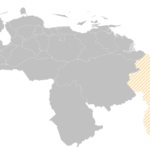Surfing at Teahupo’o: Where Olympic Dreams Meet Deadly Waves
- Teahupo’o, known as the ‘place of skulls’, is the venue for Olympic surfing in 2024.
- The wave is considered one of the deadliest in the world, requiring immense skill and bravery.
- Surfers have only a few seconds to navigate the powerful wave before it collapses.
- The decision to host surfing in Tahiti surprised many, as it is far from the French capital.
- Teahupo’o has a history of serious injuries and fatalities among surfers.
- The wave’s unique underwater topography contributes to its dangerous nature.
- Both men and women will compete at Teahupo’o in the upcoming Olympics.
- Winning requires a strategy that defies basic survival instincts.
Teahupo’o, located in Tahiti, is set to host the surfing competition for the 2024 Paris Olympics, and it’s known as the ‘place of skulls’ for good reason. Before the surfers even see the massive waves approaching, they can hear the roar of the ocean as it builds up about 500 yards offshore. When the wave finally crashes, it creates a thunderous sound, akin to an explosion. Pro surfer Jessi Miley-Dyer emphasizes the need for courage, stating that surfers must paddle into the wave with determination, ready for the ride of their lives. nnWhile it may seem unusual to hold the surfing event so far from Paris, Teahupo’o offers a unique thrill that no other surfing location can match. The waves here are generated by winter storms near New Zealand, traveling across the Pacific Ocean and gaining power before crashing into Tahiti. The underwater landscape, featuring a shallow reef that drops into the deep ocean, amplifies the wave’s intensity. nnHistorically, Teahupo’o was considered too dangerous to surf, with many questioning its surfability in the late 20th century. Unfortunately, some surfers have faced tragic outcomes while attempting to ride its waves. In 2000, Tahitian surfer Brice Taerea suffered fatal injuries after being caught by the wave. Keala Kennelly, known as the Queen of Teahupo’o, also faced severe injuries in 2011 after a ride went wrong. nnThe choice to include Teahupo’o in the Olympics is a bold move, reminiscent of the 1956 Melbourne Games when equestrian events were held far from the host city. Paris 2024 CEO Tony Estanguet believes this decision will generate excitement and showcase one of the world’s most beautiful waves. nnTeahupo’o is not just about the thrill; it’s a test of skill and bravery. Surfers must paddle deep into the wave’s barrel, overriding their instincts to survive. The competition will see both men and women tackling this formidable wave, with victory relying on their ability to navigate its challenges. As Miley-Dyer puts it, ‘There is an element of go hard or go home.’·
Factuality Level: 7
Factuality Justification: The article provides a detailed and engaging description of the Teahupo’o wave and its significance in the context of the upcoming Olympics. While it contains some subjective elements and dramatic language, it largely presents factual information about the wave, its history, and the experiences of surfers. However, there are moments of sensationalism and personal anecdotes that may detract from its overall objectivity.·
Noise Level: 7
Noise Justification: The article provides a detailed and engaging account of the Teahupo’o wave and its significance in the context of the upcoming Paris Olympics. It includes historical context, personal anecdotes from surfers, and insights into the challenges of surfing this particular wave. However, while it is informative, it lacks a deeper analysis of the broader implications of hosting the surfing event in Tahiti, which could have enhanced its value. Overall, it is well-written and relevant, but it could benefit from more critical examination of the decisions made by Olympic organizers.·
Key People: Jessi Miley-Dyer (Commissioner for the World Surf League), Joe Turpel (NBC commentator), Brice Taerea (Tahitian surfer), Keala Kennelly (Queen of Teahupo’o), Tony Estanguet (Paris 2024 CEO), Laird Hamilton (Legendary big wave surfer), Carissa Moore (Surfer), Shane Dorian (Head coach of Team USA)
Financial Relevance: No
Financial Markets Impacted: The article discusses the surfing events at the Paris Olympics but does not mention any specific financial markets or companies impacted.
Financial Rating Justification: The article primarily focuses on the surfing competition at the Paris Olympics and the unique characteristics of the Teahupo’o wave, without addressing any financial aspects or implications.·
Presence Of Extreme Event: Yes
Nature Of Extreme Event: Natural Disaster (wave-related dangers)
Impact Rating Of The Extreme Event: Severe
Extreme Rating Justification: The article discusses the extreme dangers associated with surfing the Teahupo’o wave, which has resulted in fatalities and serious injuries. The mention of a surfer’s death due to the wave’s power and the severe injuries sustained by others indicates a significant impact on those involved.·
 www.wsj.com
www.wsj.com 



